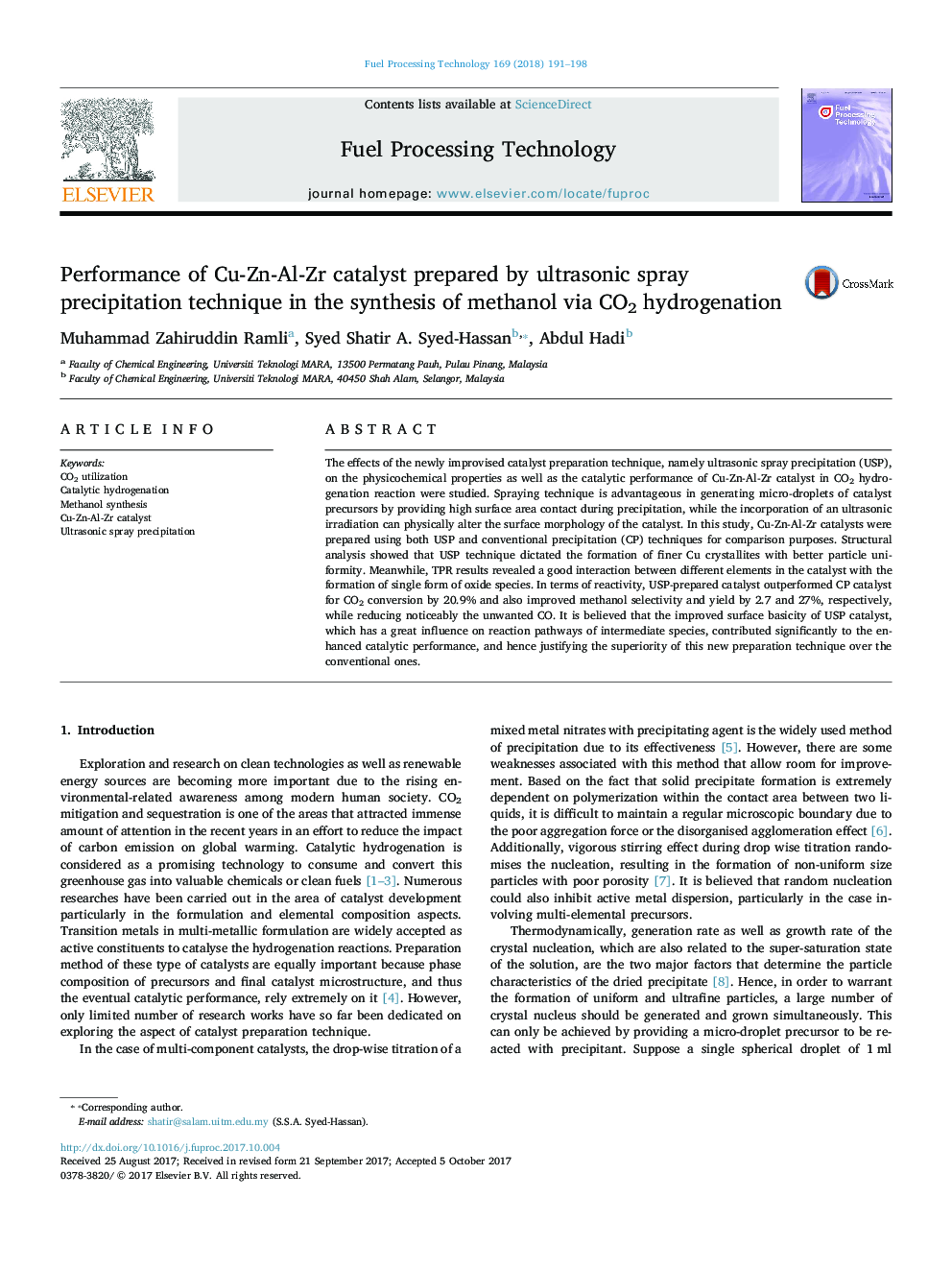| کد مقاله | کد نشریه | سال انتشار | مقاله انگلیسی | نسخه تمام متن |
|---|---|---|---|---|
| 4914331 | 1425377 | 2018 | 8 صفحه PDF | دانلود رایگان |
- Synthesis of Cu-Zn-Al-Zr catalyst using a new technique called ultrasonic spray precipitation (USP)
- Altering surface morphology to produce finer particles with better uniformity
- Good elemental interaction by the formation of single oxide species
- Improving CO2 conversion and methanol selectivity while reducing unwanted CO
The effects of the newly improvised catalyst preparation technique, namely ultrasonic spray precipitation (USP), on the physicochemical properties as well as the catalytic performance of Cu-Zn-Al-Zr catalyst in CO2 hydrogenation reaction were studied. Spraying technique is advantageous in generating micro-droplets of catalyst precursors by providing high surface area contact during precipitation, while the incorporation of an ultrasonic irradiation can physically alter the surface morphology of the catalyst. In this study, Cu-Zn-Al-Zr catalysts were prepared using both USP and conventional precipitation (CP) techniques for comparison purposes. Structural analysis showed that USP technique dictated the formation of finer Cu crystallites with better particle uniformity. Meanwhile, TPR results revealed a good interaction between different elements in the catalyst with the formation of single form of oxide species. In terms of reactivity, USP-prepared catalyst outperformed CP catalyst for CO2 conversion by 20.9% and also improved methanol selectivity and yield by 2.7 and 27%, respectively, while reducing noticeably the unwanted CO. It is believed that the improved surface basicity of USP catalyst, which has a great influence on reaction pathways of intermediate species, contributed significantly to the enhanced catalytic performance, and hence justifying the superiority of this new preparation technique over the conventional ones.
160
Journal: Fuel Processing Technology - Volume 169, January 2018, Pages 191-198
